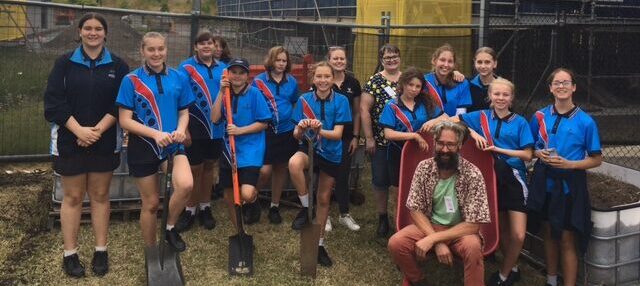Our purpose
- This is a project of education, of science, and of community engagement. It offers a multi-generational vision of food security and healthier people on a healthier planet.
- This circular food economy is designed not only to divert waste from landfill, but also to address the major food security and sustainability challenges of food waste, access to nutritionally adequate food and healthy diets.
- This project is based on the core principles of community engagement and the use of digital technology. To support the creation of circular food economies across many places and communities, we have made our knowledge and resources freely available to the public.

What is a circular food economy?
Background
The headline of this website includes four concepts, which encompass all contents of this website. The term economy has often been used to describe an approach to the use and allocation of resources that are understood to be limited or finite. This website is especially concerned with the careful management of food resources, including the way we grow, produce, distribute, consume and dispose of food. If global natural food resources were unlimited and infinite, there would be no need for an “economy” to manage them.
The term “circular economy” is often used narrowly to describe the activities of re-using and recycling products and materials to reduce the amount of waste created at the end of a supply chain. A circular economy provides a contrast to a linear economy, which sees raw materials extracted from nature, processed into products, used, consumed and discarded as waste. The emphasis of “circular economy” is on preventing materials from being discarded as waste and rather being re-used to replace or supplement virgin resources.
Food as a resource is uniquely suited to a circular economy approach as nutrients, in contrast to other materials such as plastic, paper or glass, are renewable and indefinitely recyclable. These characteristics of food should make it unnecessary to dispose of food waste, yet sending food and organic waste to landfill is still the prevailing and dominant practice. A circular food economy describes a set of principles and practices of food production and consumption that seek to re-use and re-cycle food resources and prevent them from being discarded as waste.
Creating a circular economy requires the change of principles and practices of how we produce and consume food resources at different scales, from communities to large scale supply chains and global food systems. The practices of changing a linear economy into a circular economy can be significantly enabled, enhanced and accelerated through the use of digital technology, such as sensors, internet-of-things, data analysis and automation. This project is a case study of how digital technology can help to create a circular economy, and how a circular economy of e-waste can help to create technology.
Definition and Principles of Circular Economy
The Ellen MacArthur foundation is often cited as a source for circular economy principles. Their website offers the following definition:

Circular Economy is thus not just a technical approach of re-using and recycling products, it is a deep systemic change of practices and norms that affect economy, environment and society. A circular economy envisages systemic change of principles and practices that “benefit everyone within the limits of our planet” (Ellen MacArthur Foundation, 2022).
Based on various sources this project applies the following 3 principles to define a Circular Economy:
- Recycle and re-circulate nutrients to eliminate waste from material flows;
- Reduce material throughput to prevent unnecessary resource use and waste creation; and
- Regenerate the natural resource base as our greatest common good.
Circular Economy has become a buzzword for sustainable production and consumption, yet there is still a lot of room to provide more concrete case studies and practical examples. This project aims to describe concrete practices of a circular management of food resources that aims to provide more sustainable and equitable food for everyone across the world.